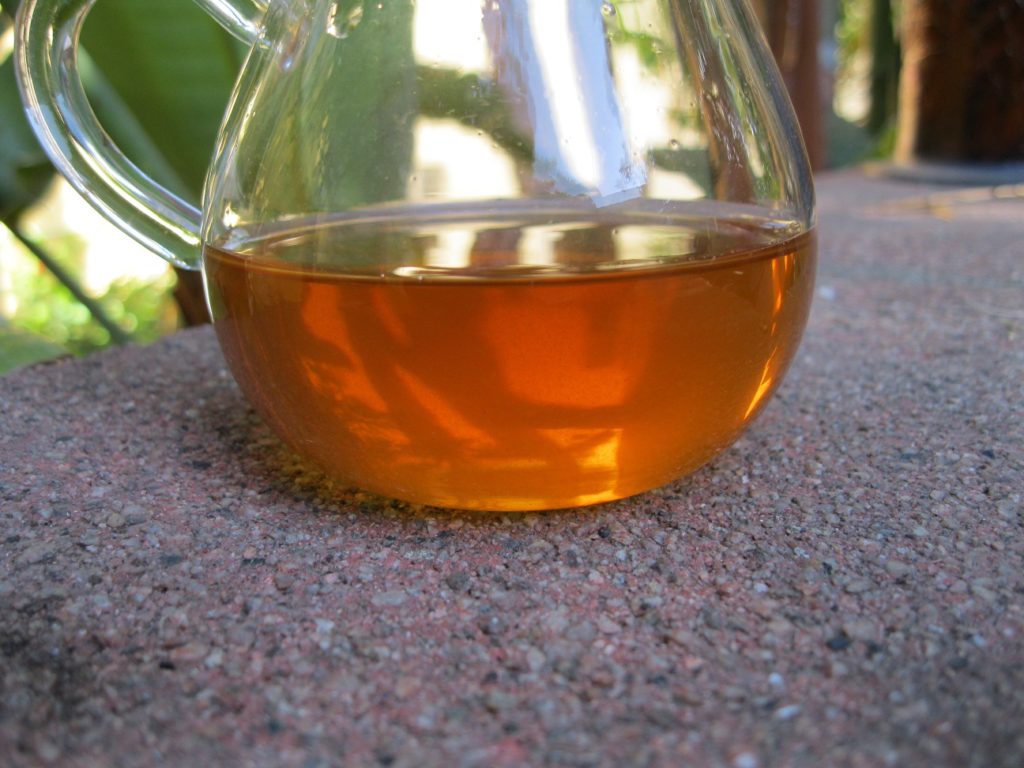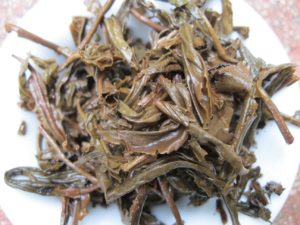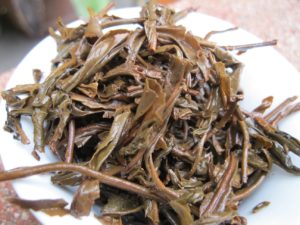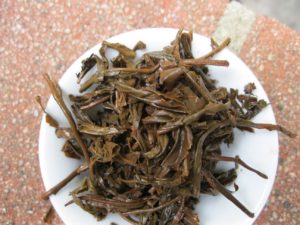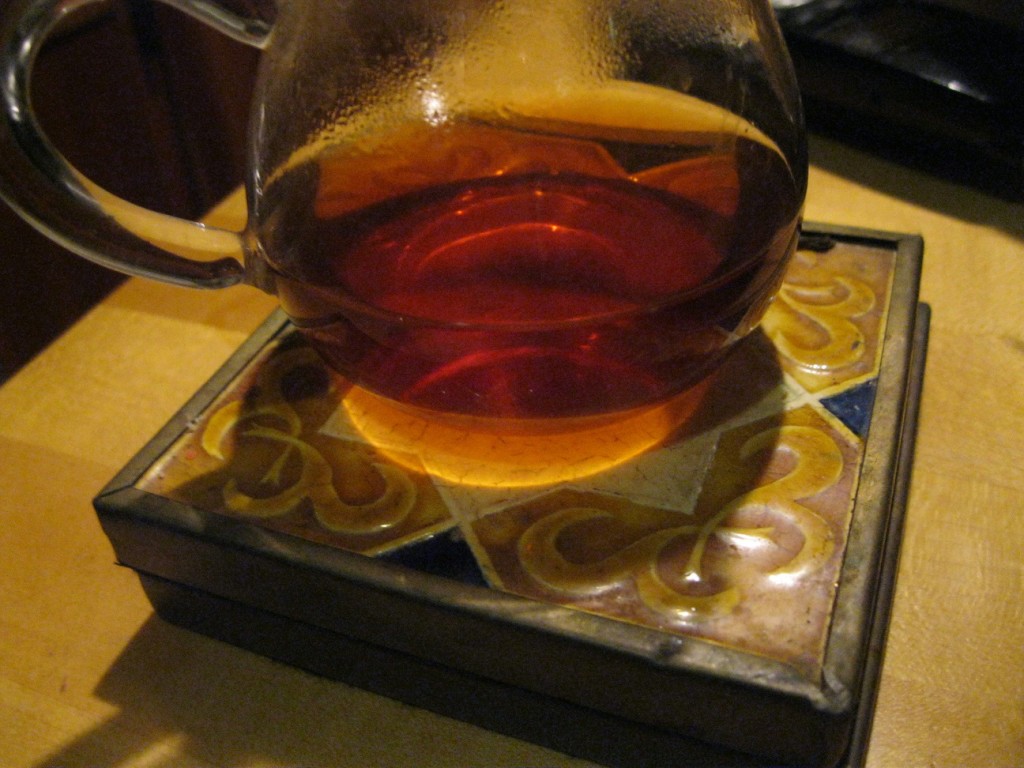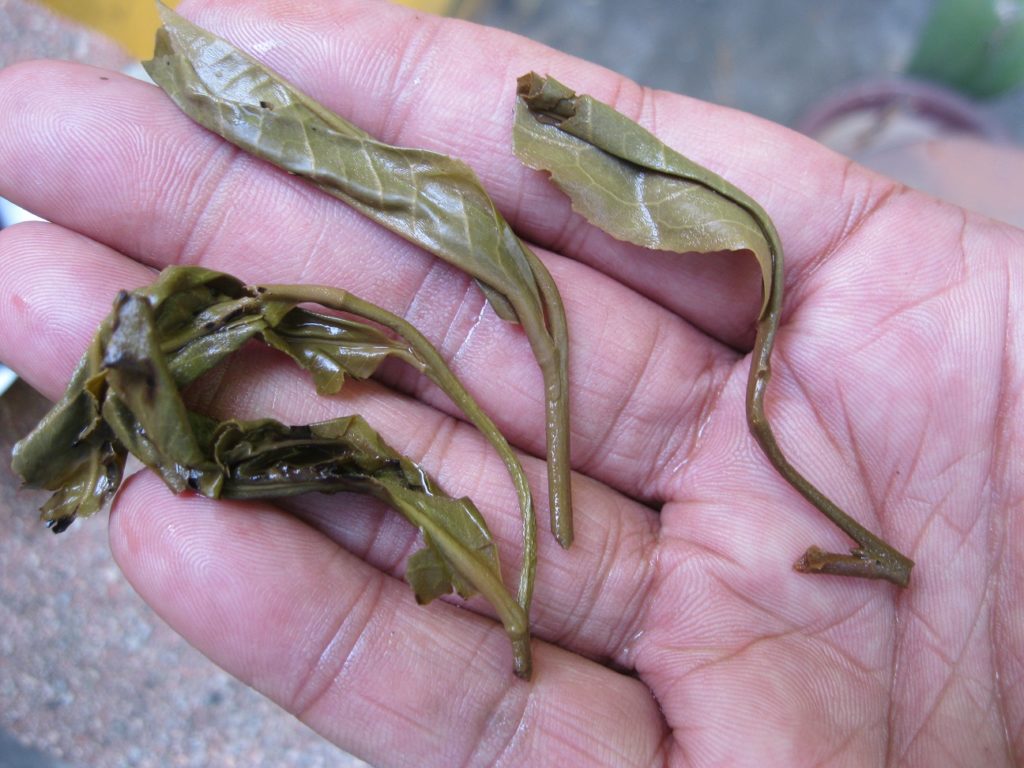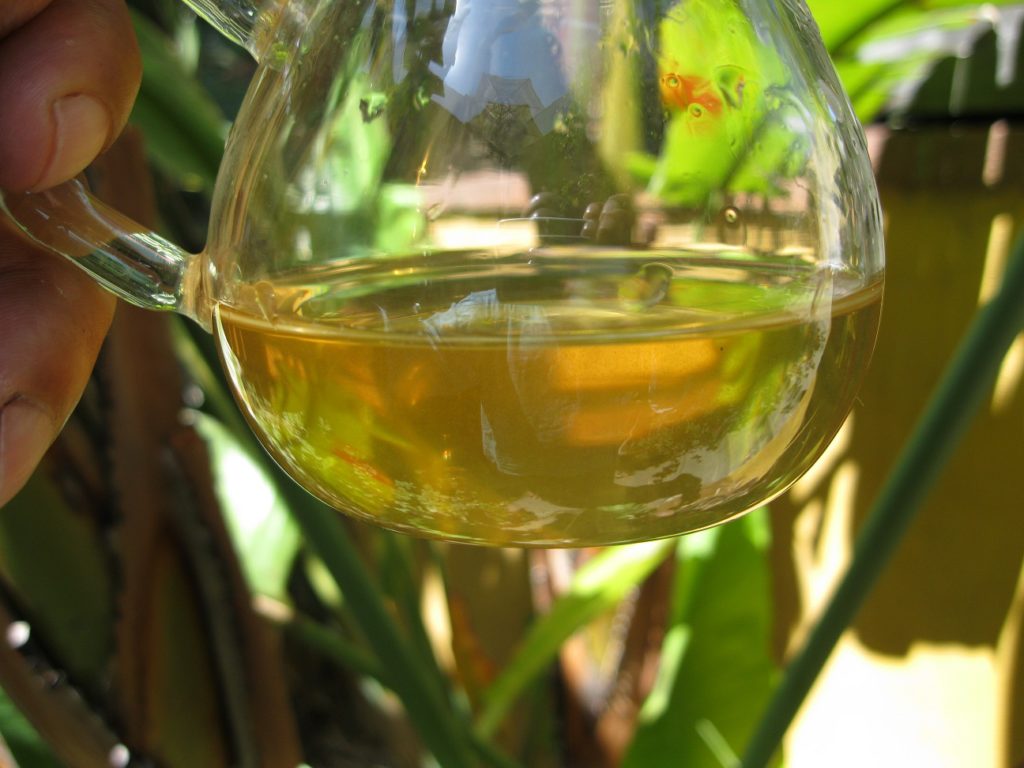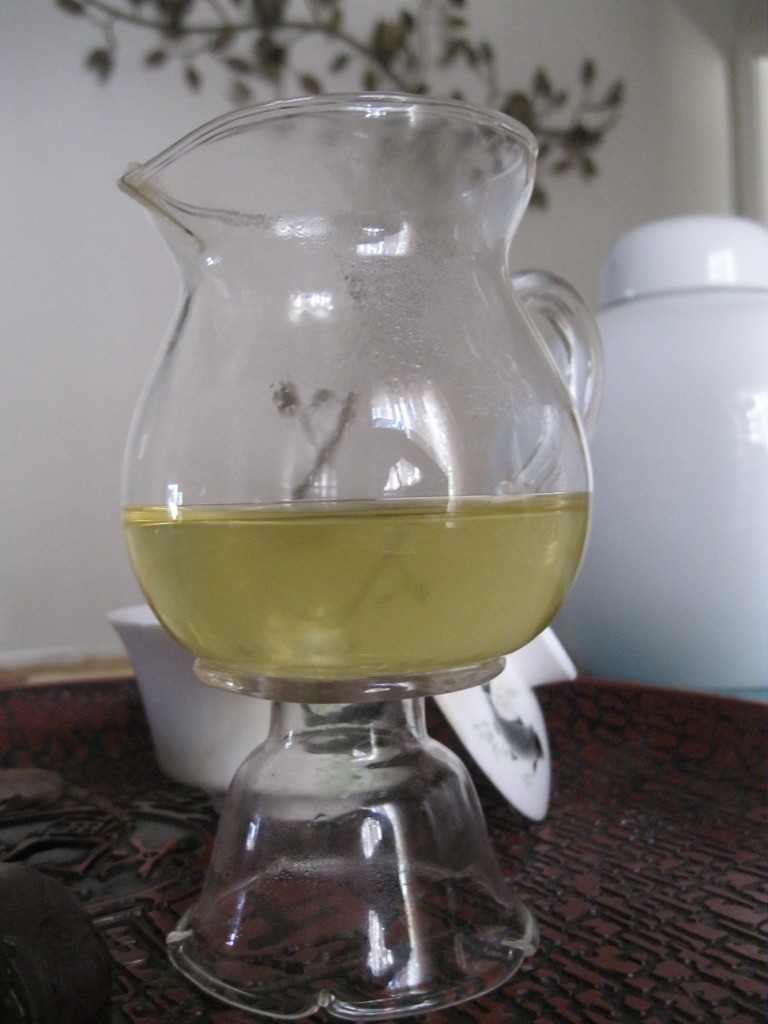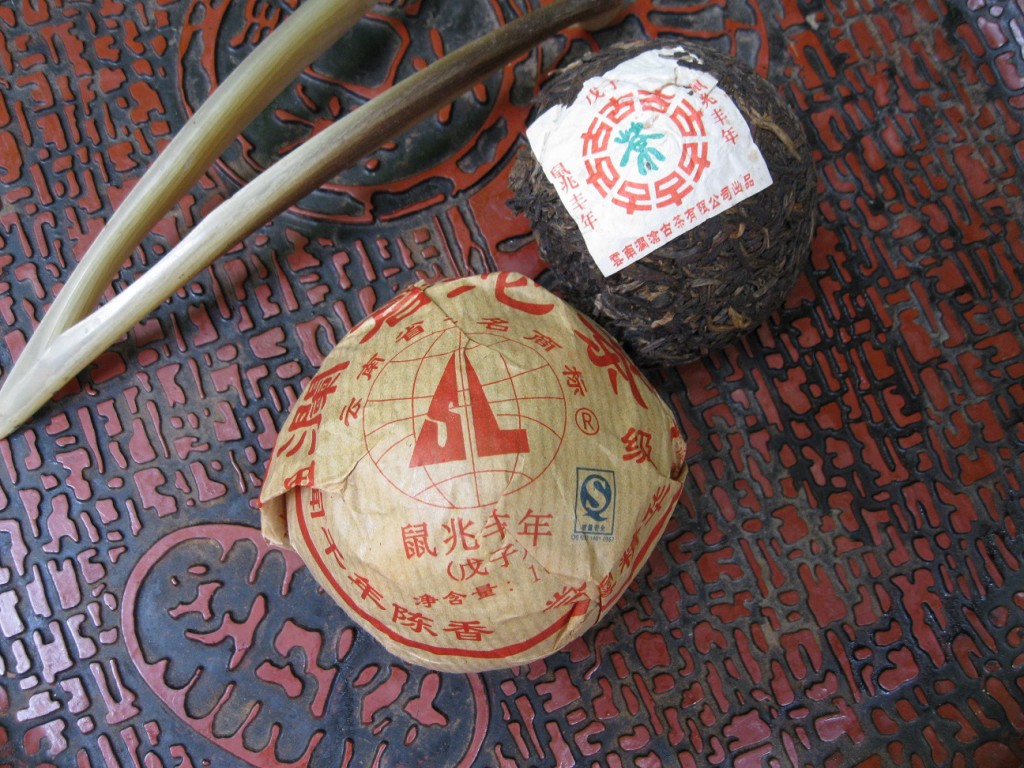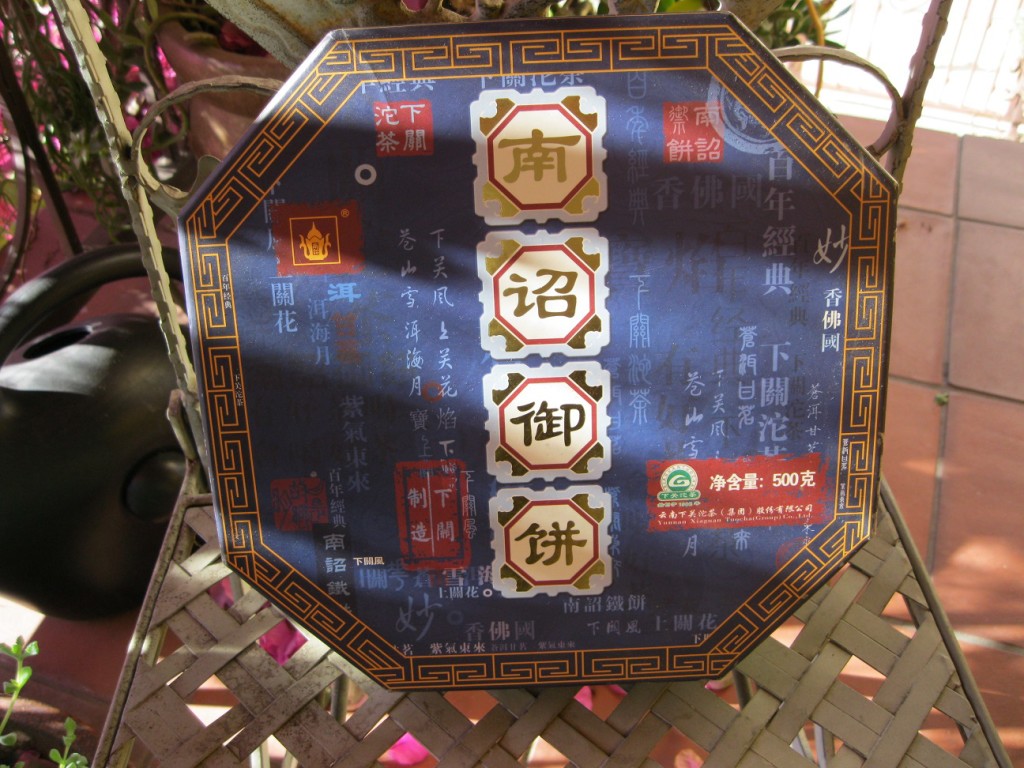Category Archives: The Junky’s Log
’05 Glee: The Epitome of Genteel Puerh
The other day I was two-timing. I was with a gathering of folks and the fare of the day was wulongs not puerhs. In the course of conversing, one person remarked that puerh was a masculine tea. I smiled because I know what she means, but that’s just not the case for all productions. Exhibit A: Glee, the epitome of a genteel (rou) production.
Yangpinhao is a brand with a clear identity. Their productions raw and ripe express an unmistakable talc and vanilla character. Glee was produced in ’05 but dry-stored for 10yrs before being wrapped. The aroma faintly floral and the liquor looks about what it should for 12yo Kunming tea, as you can see from the picture above.
In the year since acquiring Glee, I’ve downed about 1/2 of the 200g. tuo. It is gently pressed and the leaves are more whole than is usual with tuo cha. The taste doesn’t bowl you over. In fact, you have to really pay attention to this one. The impression at this stage is of highly mineralized slightly sweetened water with some floral overtones. Just three months ago those notes tasted like wild weeds, a flavor I’m very much not keen on. This floral note builds with an intensely lingering astringency that shreds and sticks to the tongue, cheeks, lips and throat about a minute in. Early infusions are woodier. There is no spice. There is no bitterness. At the 10th infusion with a time of more than 60s, the color was dark with a stronger floral note but positively zero bitterness. It has a very subtle and possibly calming effect on the body.
2014 Naked Gedeng Dragon Pearl
I’m at infusion number eight of this little treasure. I looked back to what I wrote before. The aroma of this is floral and it is the same as what can be tasted in the broth when you hold it in your mouth. Whatever bitterness that I may have detected in the past is totally absent, but the astringency of this is a noteworthy feature.
You may have trouble talking as your lips stick to your teeth it’s so astringent. Since writing about it two years ago, the floral essence seems to stand out more. The thickness is exquisite sliding down easily and its colour is now a shimmering gold. I am 10 infusions in and at 10 seconds and water at about 180 it is going strong.
I know someone is saying, “Ah-ha,” you’re faking it by using *artifically* low temperatures. Viscosity is a more important control for me than temperature per se. If a lower temperature is producing thick tasty pots, then there’s no need to up the temperature, particularly for young raws. I rarely seem to be able to wait long enough for the pot to cool. Even when blowing on the cup, it’s often still too hot. This is more than a matter of convenience, because fullest taste is not at a particularly high temperature. Why must brewing be so terribly different? Should a high-quality production require more or less temperature to release its stuff? And still, what do the temperature adherents make of the concept of scorched leaves?
I digress…
Though the astringency hangs on for quite a spell, alas there is only a faint afterthought of some ancient and forgotten fruit left in the mouth. At eleven the thickness has remained but the fragrance has started to fade. The sweet juicy broth remains. I’m going to start to up the infusion time.
The Naomi Campbell of Ripes: ’06 Langhe Tuo
The ’06 Langhe Tuo is lovely. It consistently brews crystal clear with a dark red-black hue that is a true pleasure to look at, like Naomi Campbell. Langhe productions are famous for their light fermentation style that gives rise to a very clean-tasting result. For some reason, this seems to give rise to a chocolately result ranging from milk to baker’s chocolate. If this production underwent light “fermentation,” then it is not evident to the Junky’s palate nor does it possess any chocolate.
There is no doubt that from the time when I first acquired it two years ago to the present that the ’06 Langhe Tuo’s character has changed. I remember noting anise and slight bit of humidity. I now notice that the first few infusions are quite sweet with the pronounced camphor of last year settling into a more suffuse medicinal note– a strangely evocative sense of “am I drinking cough medicine” plays vaguely in your mind as you steal another glimpse of its pomegranate lustre and take another sip to ponder some more. The humid note remains but this is not what I would consider remotely wet-stored, just has some humidity adding to the complexity of a darn ponderous creation. The one constant is its beauty. You remember Naomi Campbell don’t you? Just that pretty!
About infusing… I used 10g Langhe Tuo in a 150ml zisha teapot. About 10m after wake and rinse, started with 30s, then 2nd-3rd about 15s, then 5, before giving it a minute for the 5th-6th. Each infusion brews crystal clear.
Naked Ma-hei ’14 Dragon Pearl Update
The other day I was reading about a particular production when the common adage about Yi-wu teas was repeated: Yi-wu teas should be soft, not bitter, and a bit more astringent. The Naked Ma-hei has now hit this mark. Most all of the dragon pearls are by one measure or another soft and Yi-wu is not the only area of soft expression. Bang-dong, Xi-gui, and Bing-dao are all smooth operators from Lincang.
Ma-hei is one of the Six Great Tea Mountains. Its name is a transliteration from the dialect of the local Yao or Yi tribes, as is the case with most of the tea-growing areas in Yunnan. The SGTM were the officially recognized mountains tasked with producing tea for the Qing court in the north.
Whereas Xi-gui and Bing-dao provided immediate appeal, it took a spell for me to get my head around Yi-wu. With the exception of Yi-bang, fragrance is not its thing, but smoothness, fruitiness, butteriness, and thickness. I see that my notes said something about slight bitterness. That is gone. The puerions are active in the huigan.
A bit about brewing… Unlike many dragon pearls, the Naked Ma-hei is not so tightly rolled. The light storage taste disappears by the second infusion. After the first few infusions, it’s ok to push the leaves with longer infusion times as opposed to hotter water. The leaves are big and fat and release evenly from one infusion to the next. Overall, it doesn’t disappoint in warm summer days.
Viciously Delicious: ’07 HK Returns Square
Ever since I got this brick I’ve liked it and considered it one of Zhongcha’s best,but now it tastes wayyy different. This super compact square is beyond it vivacious days of intriguing optimism and has become viciously delicious.
We’re talking about a full mouth explosion of “puerhions,” the element that tastes like sparks in the mouth. We’re talkin’, sweet root-beer that fades into Ludens cough-drops in by about the fifth round.
As far as squares go, the ’07 HK Returns is as powerful as the both the ’09 Tulin 200g and the ’05 Bajiao Ting’s Shengtai 100g. However, some Bajiao Ting productions are a little heavy handed with the smoke, like Xiaguan. I’ve no recollection of any Zhongcha production being smokey. This is no exception. The Tulin Square is younger and not as compact as the other two. The sharp notes of the Tulin tuo that I’ve sampled are now absent in this square, despite the tuo being older. I take this as a mark of either its quality or what “squaring” does in preparation or in how it ages. I dunno.
Squares and bricks can be a species quite different from cakes. It is simply not possible to “fleck” from the HK Returns square, whereas this is not the case with the cake. The recipe is ostensibly the same, but from what I’ve been able to gather the it’s all a secret, so there’s no telling. For what it’s worth, the brick tastes more similar to the tuo, with the cake being the most dissimilar with no hints of medicinal taste and an astringency that doesn’t pop or dept the the brick.
Over, it is my sense that something happens with the crushing of the leaves in the course of shaping into a brick that makes the brew much more active in the mouth, while simultaneously muting the bitterness. I’ve noticed this is quite a few of the very compact bricks. Since leaf aesthetic is usually not part of the product’s composition, so they often fall beneath the radar screen of the speculators.
On Water Temp: Young Raw Puerh
A lower water temp isn’t going to make that raw production you hate any tastier, but it can make a big difference with finer productions like dragon pearls. I know to some that this is a heresy. For older productions the use of hot water makes sense. More cooking of the leaves has to occur in order to get the stuff out. This is less so with young productions because the same stuff is in a much more active state. The concern is less with getting stuff out than with getting too much.
How do you know if you’ve gotten too much? Do your own experimenting. See if by lowering the water temp whether a truer nature of the tea is expressed. One writer, in speaking on the matter, makes reference to “scorched leaves” in the context of bitterness and astringency. She also noted mitigating factors like brewing vessel, pour-rate, and the leaving the lid on or off as the leaves cool. Much to consider…
One of the chief reasons why the hot water dogma seems counter-intuitive is because a degree of any type of cooking requires a sensitivity to the qualities of the thing being cooked. Cooking all leaves at a set temperature seems to place the standard of performance at the temp itself, as opposed to where the tea performs best based on its nature. Once raws are open, they don’t require the cooking of a ripe, rather a coaxing. This is especially the case with young raws, where the ideal water temp might more closely approach your favourite drinking temp than something unnecessarily hotter.
The Chinese mandarins like them some dainty-delicate. Dragon pearls epitomize this, as each pearl is made from carefully selected leaves. This shape, beyond being extremely convenient, confers a mandarin meaning. This is why productions usually don’t have names beyond the terrior from which they hail. The names themselves carry great mandarin appeal. This suggests to me that a heavy hand in infusing (you see I didn’t say “brewing”) is inconsistent with the dragon pearl shape. By the same token, a lighter hand shouldn’t mean that the brew is weak and tasteless. If that is so, it has less to do with the temperature of the water than it does with the overall quality of the tea itself.
There’s a Japanese gyokuro, I believe, that is being served with an ice cube. I tried that once with a puerh and it was horrible. I might keep trying. There’s nothing wrong with experimenting. Young raws tend to taste better at a lower temperature served from porcelain. This is especially the case with dragon pearls from the elegant terriors, like Bingdao, Xigui, and traditional six great mts, like Bow Village and Yi-wu Zheng Mt, not just Yi-wu.
The Neglected Sister to Bing-dao, Xigui
So the warm weather provides proper conditions for diving into the dragon pearls. This week I visited Bing-dao’s neglected sister Xigui. Really, I don’t know how neglected but Xigui is considerably less hyped.
I’ve run across writings that are totally contradictory regarding the taste profiles of certain terrior. It’s reasonable to suppose that the differences stem from which side of the mountain the garden lies. On the whole, whenever I think of Lincang productions a high floral quality comes to mind that I associate with neither Bing-dao nor Xigui, more like with Feng-qing and Jing-gu. Many Mengku Rongshi productions are like this. What I’ve sampled of Da Xue Shan have also had this quality, along with the Lunar Series of Six Great Tea Mts. It gets confusing. It is probably best to familiarize oneself with particular brands, because often across productions there is a signature expressed by the brand itself.
This is all a way of prefacing what I’ll express about the Xigui taste profile. Xigui is a mandarin tea. It’s not going to bop you over the head or resort to flowery gimmicks to get you to like it. Think more of a Daoist ascetic drinking the dew from the petals of lilies. As I mentioned before, 2014 was a kind of golden year for the production of dragon pearls. The value added by making pearls still made since relative the cost of labour and the prices that maocha commanded outright. In any case, many producers who were keen on the Dragon Pearl enterprise have gotten out or greatly reduced their selection and quality, which I surmise has everything to do with the cost of labour.
Once such company is Kebu Tea company. In 2014 they produced two varieties of the Xigui dragon pearl, an expensive one and a cheap one. I’ve consistently found the cheap one better. I don’t want to belabour “dew from the petals of lilies.” It works for the summer. The less bitter the better. This production has zero bitterness. For such a light taste, the ensuing astringency on the cheeks and tongue is intriguing. Reminds me of that drink Vitamin Water, light and sweet with astringency.
Seeing the Light or Slapped by the ’08 Lancang Rat
Somewhere between the grade of the selection, the season in which it was picked, the degree of dry-storage, and the Lancang Factory signature, you’re going to get slapped around. Somewhere at the extremes of cost efficiency and consumer abuse, you’ll find the ’08 Year of the Rat. I’ve broken a light sweat and my gut feels oppressed. It’s sorta like the feeling you get before you heave. It is extremely bitter and astringent by the second infusion. There is no sign of wild-weed taste. The perfume in the liquor and aftertaste is oppressive. It lasts for a considerable spell building to a crescendo after 3m. The sweetness and the thickness are there but the expression is aggressive like teas that are only one or two years old. There’s no attempt at any type of humidifying it while it aged. Two years in LA have not seemed to have altered it in this regard.
The bitter “ba qi” productions are often gut bombs. This is no exception. I brewed it in the green clay pot because I wanted to see if it would mellow any, but it doesn’t. It is by far the most bitter and astringent in the collection. It might be the first in the Lancang lunar series. I don’t know because I’ve only been able to track down three of their lunar tuo productions, ’10 Tiger and ’09 Ox being the other two. Among the three, the Rat is their smallest, cheapest, and wrapped in brown paper, whereas in subsequent years they were wrapped in white cotton paper.
For whatever reason, the 250g Tiger tuo has aged most. I mention this because even though there are some qualitative differences between the two that might have to do with recipe or variations from one year to the next, the Tiger has started to express some noteworthy scented- wood notes. I want to say sandalwood, but to be honest I think that would be pretentious because of a very limited scented-wood repertoire. I can tell you, it’s not cedar, and it’s only in its very incipient stages of expressing.
I’m not sure if this character would come out in the production under wet storage. It would be very interesting to compare because it seems to me that some aspect of this type of wood expression comes from being dry.
I tasted many puerhs of this sort in Kunming, even ones that cost relatively handsome prices but made me feel either on the verge of passing out or throwing up. Even in later infusions, the Rat busts the gut, which doesn’t burp out completely like others.
This brings up the question of “bad tea.” It seems that one trait of a bad tea is that it bottoms out, which this doesn’t. Another trait is that the taste is flat and possesses little complexity, not applicable here. Bad tea for me definitely has that weed taste, which might be something to do with abandoned material. No sign of it here. I keep drinking these types in the hope I’ll learn something. So far the Rat is too much for me.
2008 Nanzhao in Claypot
Boy, this Nanzhao has really, really changed. Vrrrrrrp. A couple months back I was gifted a pot with that green clay. No stamp at the bottom. I have another of the same clay, also a gift which I found to make an excellent pot of Yunnan Gold. I have some others with the red and the dark clay. I seem to have noticed that those all produce bitter results with the sheng, which I don’t enjoy. This green seems to raise good shengs to another level, maybe not such good ones too.
The Nanzhao in this vessel is “POW” into the second infusion. At the end of my first cup, I thought it tasted really good. The clear and overriding flavor is camphor, like peppermint candy mixed with thick zinganoids that hang in the mouth, on the tongue and cheeks with an ever so slight hint of sour and something metallic.
By the fourth infusion I became positively concerned that the pot was drinking my tea. The tea remained sweet and flavourful but not nearly as thick. The fifth was given a good 30+s and was richer though as it cooled the bitter came through. Thoroughly enjoyable though I doubt it can be pushed beyond seven. Stays sweet and smooth throughout.

